Russian Revolution SummaryNumerous elements that contributed to widespread unhappiness among the Russian population can be linked to the origins and causes of the Russian Revolution. An autocratic monarchy governed Russia under the direction of Tsar Nicholas II. Dissatisfaction was rampant because of the tsar's unchecked power, oppressive policies, and Russia's ancient political and social structures. 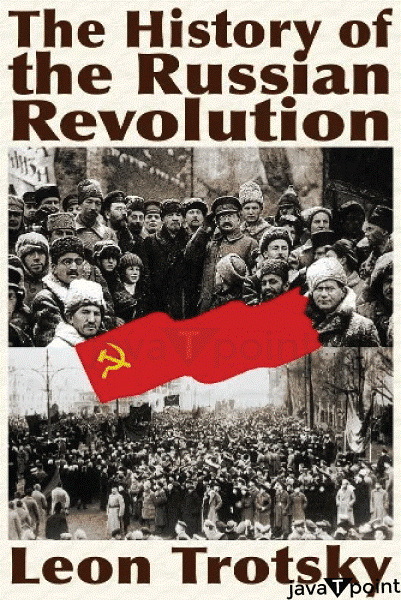
Background and CausesThe key components that prepared the ground for the revolution are listed below: 1. Social InequalityThe affluent nobles and the great majority of peasants and laborers in Russia were sharply divided. The working conditions for workers in industrial factories were subpar, while the peasantry endured severe conditions. 2. Economic DifficultiesDuring the late 19th and early 20th centuries, Russia's industrialization initiatives contributed to economic expansion, but they also accelerated urbanization, increased population density, and resource depletion. As a result, many Russians saw increased inflation, food shortages, and a decline in their level of living. 3. Russo-Japanese WarRussia's defeat in the 1904-1905 Russo-Japanese War stoked unrest even more. The defeat exposed the inefficiency and corruption of the government, sparking demonstrations and demands for political change. 4. World War IThe issues already present were made worse by Russia's involvement in the war. Heavy deaths, a burden on the economy, and increased unhappiness among troops and people resulted from the conflict. 5. Political OppositionSeveral political parties and coalitions were formed to oppose autocracy and demand reforms. These included socialists, liberal thinkers, and revolutionary groups like Vladimir Lenin's Bolsheviks. 6. Influence of Marxist IdeologyIn Russia, workers and intellectuals began to embrace Marxist ideologies, which call for the downfall of the capitalist system and the creation of a proletarian-led society. These underlying causes, combined with the events in 1917, produced a turbulent atmosphere ripe for revolutionary change. The February Revolution, which will be covered in more detail in the following section, signalled the start of a dramatic shift in power dynamics and laid the groundwork for the subsequent Russian Revolutionary events. 1917 February RevolutionOne of the key moments of the Russian Revolution was the February Revolution of 1917, commonly referred to as the February Uprising. As a result of food shortages, high prices, and general unhappiness with the war effort, protests broke out in Petrograd (formerly known as St. Petersburg) on February 23 (according to the Julian calendar then in use in Russia, or March 8 in the Gregorian calendar). 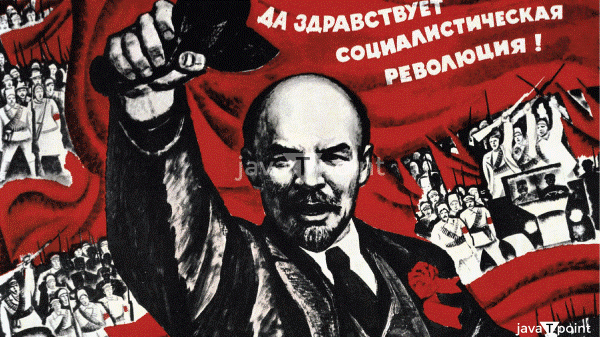
Industrial workers strikes for better pay and working conditions were the initial catalyst for the rebellion. Soldiers, students, and intellectuals were among the many social groups that rapidly joined the protests. The disgruntled masses clashed with the police and military as the demonstrations worsened. The tsarist authorities tried to end the demonstrations initially, but they could not do so. Although orders to fire on the masses were given to the troops, many felt sympathy for the protesters and disobeyed. The tsarist regime was severely weakened when certain troops even joined the demonstrators. A Provisional Committee was established by the Duma (the Russian parliament) on February 27 (March 12) to form a new administration. Tsar Nicholas II abdicated the throne on March 2 (March 15), ending centuries of Romanov control, seeing the need for change. The Provisional Government was established to fill the political void caused by the tsar's resignation. Prince Lvov first headed it, and afterward, Alexander Kerensky. Its objective was to make Russia a constitutional democracy. However, the Provisional Government faced several difficulties, such as the war's continued progress, peasants' demands for land reform, and the Petrograd Soviet's growing sway. This body represents workers and soldiers. The Russian autocracy ended with the February Revolution, which paved the way for a more democratic and forward-thinking political system. In addition, it resulted in a struggle for influence and authority between the Petrograd Soviet and the Provisional Government. Eventually, this delicate equilibrium would break down, paving the way for the October Revolution and the Bolshevik takeover of power later in 1917. Government in Transition and Dual PowerDuring the February Revolution of 1917, Tsar Nicholas II abdicated, and the Provisional Government was founded to rule Russia. The Provisional Government, initially headed by Prince Lvov and then by Alexander Kerensky, sought to steer the nation through converting to a constitutional democracy. Most liberal and moderate socialist politicians, including Duma members and well-known academics, comprised the Provisional Government. It aimed to tackle the nation's most pressing concerns, including terminating Russia's involvement in World War I, implementing governmental changes, and dealing with social and economic issues. 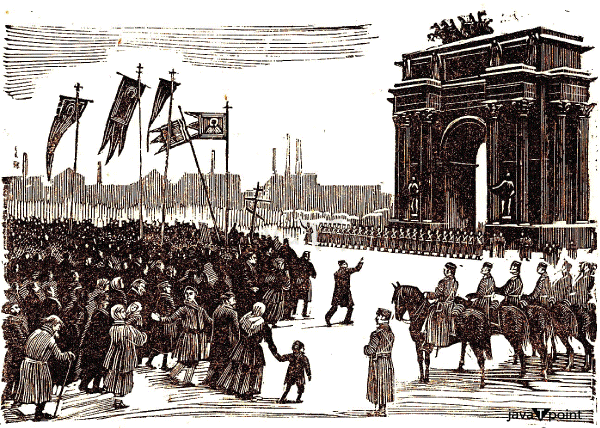
However, the Provisional Government was met with serious obstacles right on. As a result of the general public's perception that it was disengaged from their needs and goals, it needed more legitimacy and support. The government's choice to stay in the war was particularly unpopular because it went against the wishes of the nation's exhausted Russian citizens. The Petrograd Soviet, a rival power center, also had to be fought down by the Provisional Government. A council comprised of delegates from the working class, military, and peasantry was known as the Soviet. It had a significant impact, particularly in Petrograd (formerly St. Petersburg), the hub of revolutionary action. Initially created after the 1905 Revolution, the Petrograd Soviet rose to prominence during the February Revolution. It claimed to speak for the interests of the working class and soldiers and developed into a venue for discussion, choosing sides, and planning uprisings. The urban workers and soldiers, who were fed up with the policies of the Provisional Government, overwhelmingly supported the Soviets. A dual authority structure resulted from the Provisional Government and Petrograd Soviet coexisting. Political unpredictability and instability resulted from both organizations' competing claims of authority and influence. Although the Soviets could organize the masses and garnered widespread support, the Provisional Government maintained traditional political dominance. The two bodies tried cooperating and coordinating their movements, creating a delicate equilibrium due to the dual power dynamic. 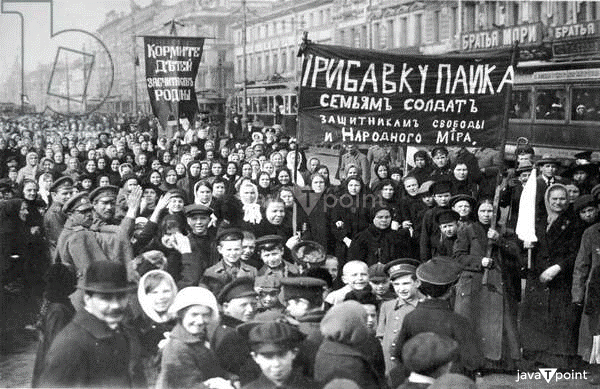
On crucial topics, however, such as the war's continuation, land distribution, and the Soviet Union's role in Russia's administration, they frequently disagreed. Ultimately, the Provisional Government's authority was undermined by its incapacity to solve the populace's urgent issues and its failure to realize the people's desires for change. This gave the Bolsheviks, led by Vladimir Lenin, a chance to overthrow the government during the October Revolution, which resulted in the foundation of Soviet authority and the dissolution of the dual power structure. Bolshevik Rise to Power1. Bolshevik ConsolidationOver the ensuing months, the Bolsheviks tried to increase their influence and win over the support of the working class, military, and peasantry. They lobbied for socialist measures to meet the populace's needs by using their power within the Petrograd Soviet. 2. July Days and Temporary SetbackThe "July Days" and Temporary Setback: In July 1917, the Bolsheviks organized a protest in Petrograd called "July Days." However, the Provisional Government put down the demonstration, which gave the Bolsheviks a short-term setback. Lenin fled into hiding when a large number of party members were detained. 3. Bolsheviks Gain Majority in Petrograd SovietBy September 1917, the Bolsheviks had seized control of the Petrograd Soviet, making them the majority party. They could control and exert great influence over Soviet decisions thanks to this. 4. Preparation for the October RevolutionLenin and the Bolshevik leadership completed their plans for the revolution in October (according to the Julian calendar). To gain support among the workforce, soldiers, and sailors, they took advantage of the rising dissatisfaction with the Provisional Government, particularly its failure to answer public concerns. 5. October RevolutionThe Bolsheviks started the takeover of power on the evening of October 25, 1917 (according to the Julian calendar). They took control of crucial government structures, telegraph offices, and critical locations in Petrograd. The Second All-Russian Congress of Soviets, headed by the Bolsheviks and their allies, took power after the Provisional Government was destroyed. 1917 October RevolutionOne of the key moments of the Russian Revolution was the October Revolution of 1917, sometimes referred to as the Bolshevik Revolution or the Red October. In October 1917 (according to the Julian calendar), the Bolshevik Party, led by Vladimir Lenin, overthrew the government in Petrograd (now St. Petersburg). 1. Context and PreparationRussia was going through political unrest and rising unhappiness in the months before the October Revolution. The people's demands for an end to the war, land redistribution, and workers' rights still needed to be met by the Provisional Government, which was set up following the February Revolution. Under Lenin's leadership, the Bolsheviks took advantage of this discontent and attempted to enlist support for their cause. 2. Military Revolutionary CommitteeLeon Trotsky was the chairman of the Bolsheviks' Military Revolutionary Committee, constituted within the Petrograd Soviet. This committee was instrumental in planning the armed uprising and directing the activities of the revolutionary forces. 3. Key Locations SeizedOn October 25, 1917 (Julian calendar), workers', soldiers', and sailors' Bolshevik troops seized key locations in Petrograd. These included bridges, the Winter Palace, other significant government buildings, telegraph offices, and the seat of the Provisional Government. 4. Overthrow of the Provisional GovernmentThe Provisional Government was successfully ousted because it was undermined by its inability to meet the aspirations of the populace and because it was experiencing internal strife. Civil War and Outside InterferenceThe complex war that developed after the October Revolution and the formation of Soviet rule in Russia, the Russian Civil War, lasted from 1918 until 1922. Numerous factions were active in the civil war, also characterized by extensive international participation. The main features of the Russian Civil War and foreign involvement are as follows: 1. Opposition ForcesThe Bolsheviks encountered opposition from several groups, notably the so-called "Whites," who were anti-Bolshevik forces. Numerous groups comprised the White movement, including monarchists, liberals, conservatives, and socialist revolutionaries. They sought to depose the Bolshevik government and reinstall another system of administration in Russia. 2. Foreign InterventionDue to geopolitical, ideological, and economic causes, numerous nations engaged in many foreign interventions during the Russian Civil War. The principal foreign nations involved were: i. Allied Powers During World War I, the Allies intervened in Russia to defend the Whites and stop the Bolsheviks from establishing a socialist government. The Allies included Britain, France, and the United States. They had a variety of motivations, including worries about the Eastern Front, aversion to the spread of communism, and a desire to further their geopolitical objectives. ii. Central Powers To eliminate Russia as a potential adversary in World War I, Germany and Austria-Hungary originally supported the anti-Bolshevik forces. However, the Central Powers withdrew their support after the war's end and the Brest-Litovsk Treaty. iii. Japan To protect its territory and economic i1nterests, Japan was extensively involved in the Russian Far East. Japanese troops aided anti-Bolshevik movements and conquered sections of Siberia. 3. Impact of Foreign InterventionForeign involvement significantly altered how the Russian Civil War occurred. It prolonged the war, strengthened the White side, and put pressure on the Bolsheviks' financial and military resources. The foreign forces involved in the intervention had varying goals and priorities. Hence the operation could have been more cohesive. 4. Leadership and the Red ArmyThe Red Army, commanded by Leon Trotsky, became the Bolsheviks' armed force. The Red Army played a critical part in securing Soviet control as it increasingly grew stronger and better organized. The Bolsheviks' ultimate victory was largely made possible by Trotsky's military tactics and leadership. 5. Results and Bolshevik VictoryThe Bolsheviks ultimately won the Russian Civil War, despite obstacles provided by opposition troops and outside interference. The Red Army was able to defeat the Whites and take control of most of the former Russian Empire thanks to Trotsky's strong military guidance and various military strategies. The Russian Civil War and foreign interference significantly impacted Russia's growth as a socialist state. It resulted in terrible destruction, fatalities, and economic disruption. The civil war experience also strengthened the Bolsheviks' resolve to increase their influence and continue down a socialist transformational path, influencing the Soviet Union's future course. 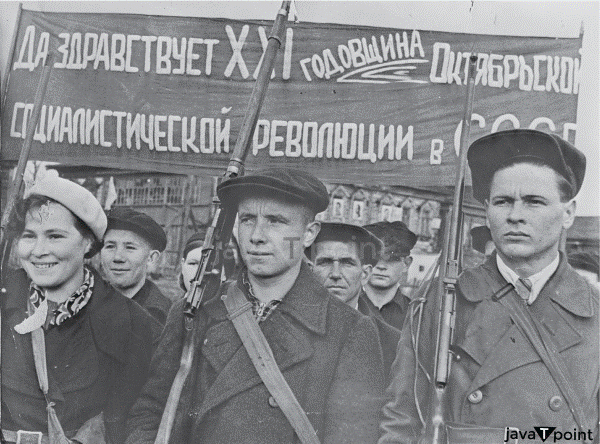
Leadership under Lenin and the New Economic PolicyThe early years of Soviet Russia were significantly shaped by Vladimir Lenin's leadership, particularly during the tumultuous era that followed the October Revolution and the Russian Civil War. Bolshevik power consolidation, the implementation of socialist reforms, and addressing the nation's economic issues were all goals of Lenin's plans and strategies. The New Economic Policy (NEP), implemented under Lenin's direction, was one of the major initiatives. The NEP and Lenin's leadership's main tenets are as follows: 1. Leadership throughout the Revolution and the American Civil WarLenin's leadership was distinguished by his enthusiasm for revolution, strategic thinking, and capacity to enlist the working class and the Bolshevik Party. His leadership throughout the October Revolution and the Civil War gave the Bolshevik cause purpose and consistency. 2. Putting Socialist Policies into PracticeLenin was dedicated to creating a socialist society in Russia. Under his direction, the Bolshevik government nationalized businesses, banks, and land to consolidate economic power and eradicate capitalism. 3. Communism of WarDuring the American Civil War, Lenin's regime used a strategy known as "War Communism." It entailed the concentration of financial resources, the confiscation of grain from farmers, and governmental management of distribution and production. War Communism led to suffering and economic disruption despite its intentions to support the Red Army and the war effort. 4. New Economic Policy (NEP)Lenin created the New Economic Policy (NEP) in 1921 in response to the economic hardships brought on by War Communism and the growing civil upheaval. The NEP marked a change in strategy toward one that was more focused on the market, allowed for some elements of private enterprise, and restrained capitalism. The NEP's main features included encouraging the development of small-scale private firms, allowing limited foreign investment, and allowing peasants to preserve and sell excess agricultural production. It sought to alleviate the massive unhappiness brought on by War Communism and to stimulate the economy and manufacturing. ConclusionThe NEP ushered in a time of comparatively stable conditions and economic recovery. It resulted in a rise in agricultural output, a resurgence of trade, and the expansion of small companies. However, some extreme Bolsheviks opposed the NEP, seeing it as a retreat from socialist ideals and a possible threat to the revolution's accomplishments. |
 For Videos Join Our Youtube Channel: Join Now
For Videos Join Our Youtube Channel: Join Now
Feedback
- Send your Feedback to [email protected]
Help Others, Please Share









